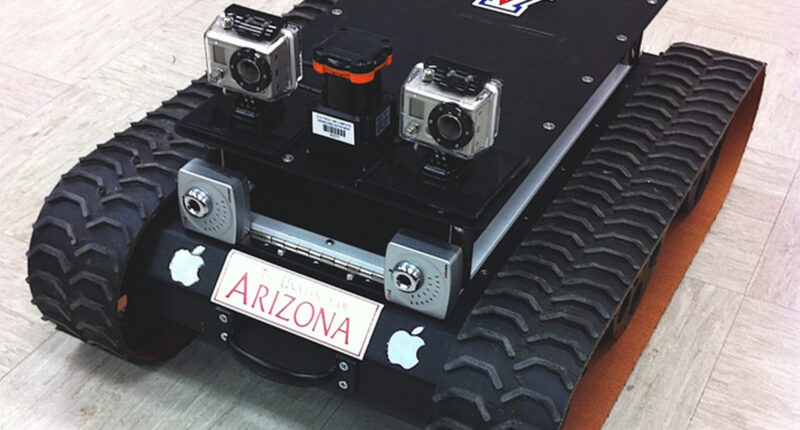SCIENTISTS have been developing a new generation of robots that will scour Mars’ tunnels and caves for spaces where humans can live.
University of Arizona (UA) scientists created a communication network that would allow rovers, lake landers, and submersible vehicles to link up and work as a team without human input.
The team gave the rovers sensors, or nodes, that they could drop along the way to help robots find their way when exploring Martian tunnels and caves.
Engineers believe that lava tubes and caves on the Red Planet would make ideal homes for future humans because they would shield astronauts from cosmic radiation and don’t need construction.
How does this work?
Robots proceed on their own while monitoring the surrounding environment, all the while wirelessly connected to other bots.
Each rover drops sensors along the way. If a rover senses the signal is fading but still in range, it drops another.
Every rover will make the decision to drop or not to drop on its own, as the data network removes the need for the mother robot to control their actions.
Professor Dirk Schulze-Makuch, president of the German Astrobiological Society, said: “The communication network approach introduced in this new paper has the potential to herald a new age of planetary and astrobiological discoveries.
“It finally allows us to explore Martian lava tube caves and the subsurface oceans of the icy moons – places where extraterrestrial life might be present.”
Researchers drew inspiration for their robot network from the fairytale Hansel and Gretel, which comprises a pair of siblings using breadcrumbs to mark their way home.
Most read in News Tech
Honoring their inspiration, the engineers termed it “Breadcrumb-Style Dynamically Deployed Communication Network,” or DDCN.
Scientists have now patented the device which will guide robots on other planets.
The robots could also aid in searching for extraterrestrial life on other planets as well as help search for survivors of natural disasters here on Earth.
Remarking on the study in Advances in Space Research, UA’s Professor Victor Baker, said: “It holds magic.
“The most amazing discoveries in science come about when advances in technology provide both first-time access to a thing or place and the means of communicating what is thereby discovered to creative minds that are seeking understanding.”
This post first appeared on Thesun.co.uk











